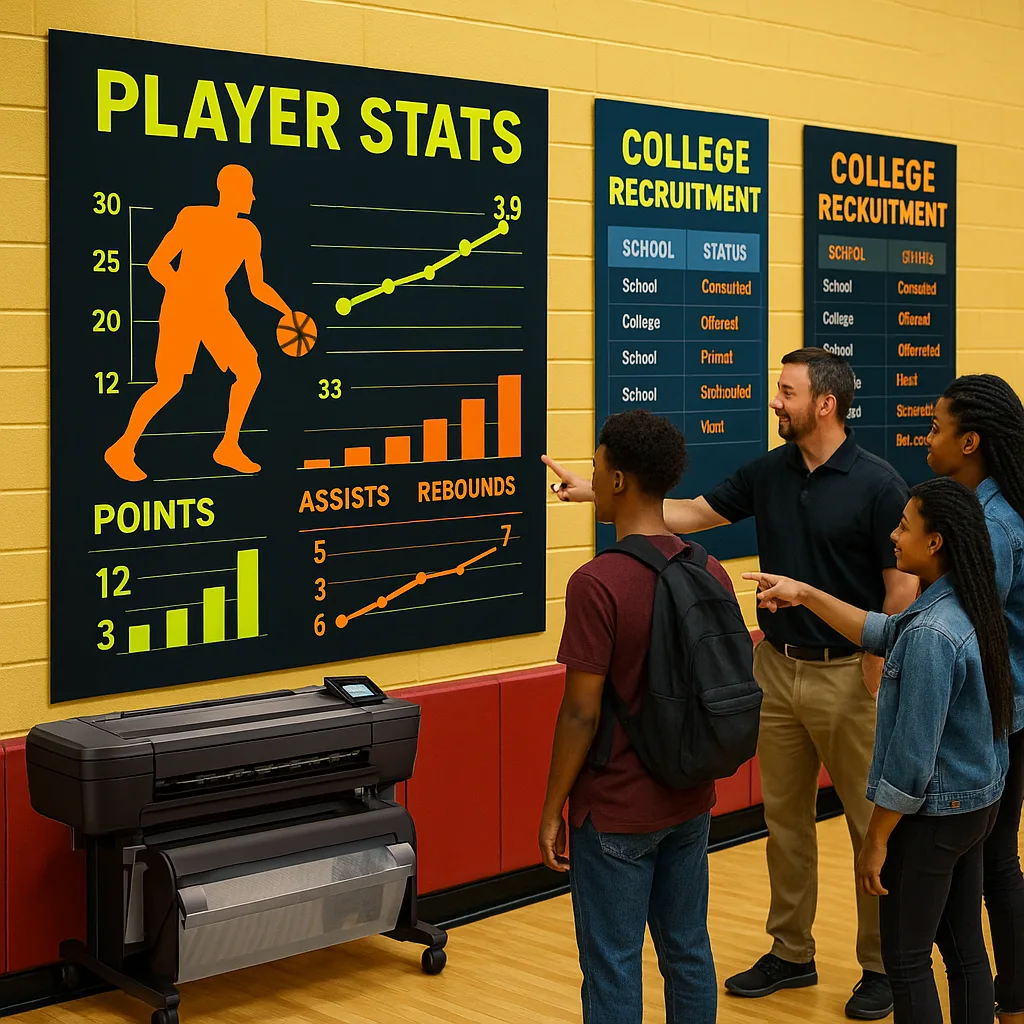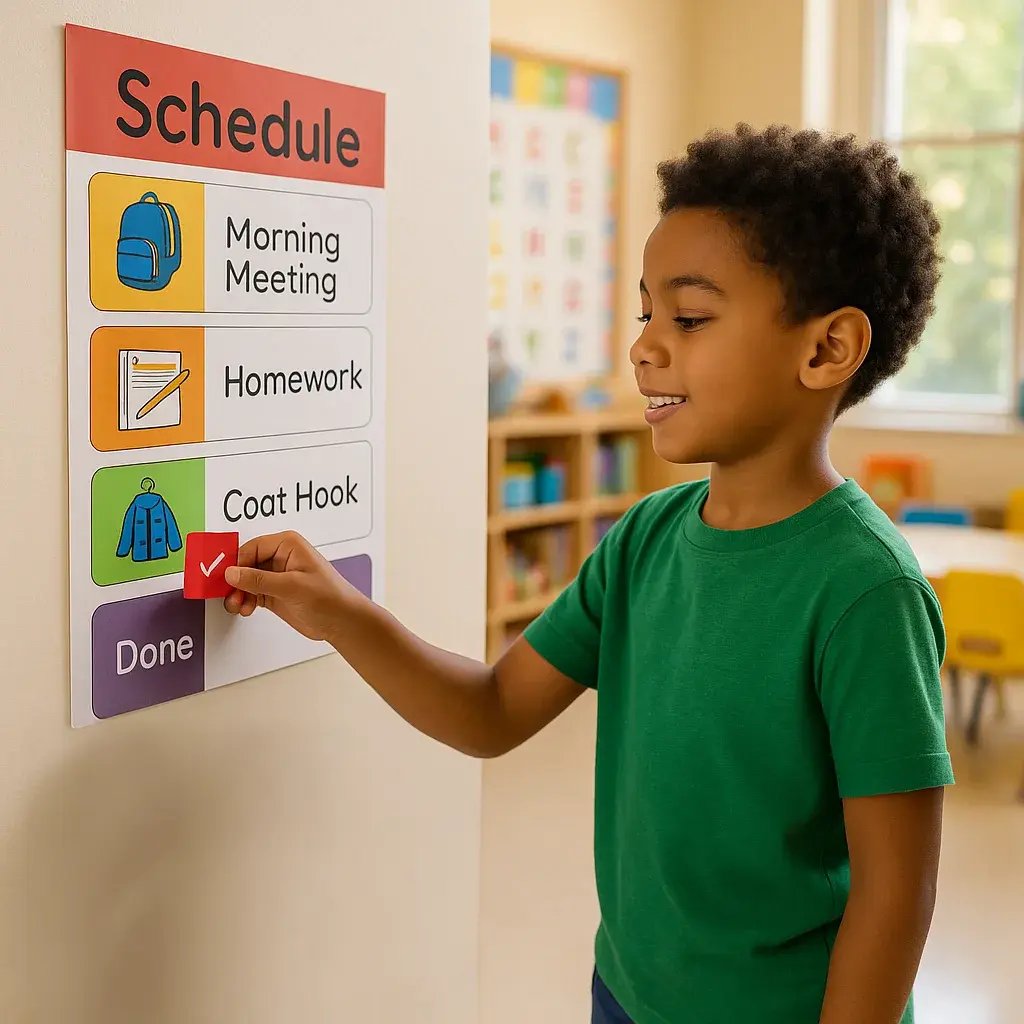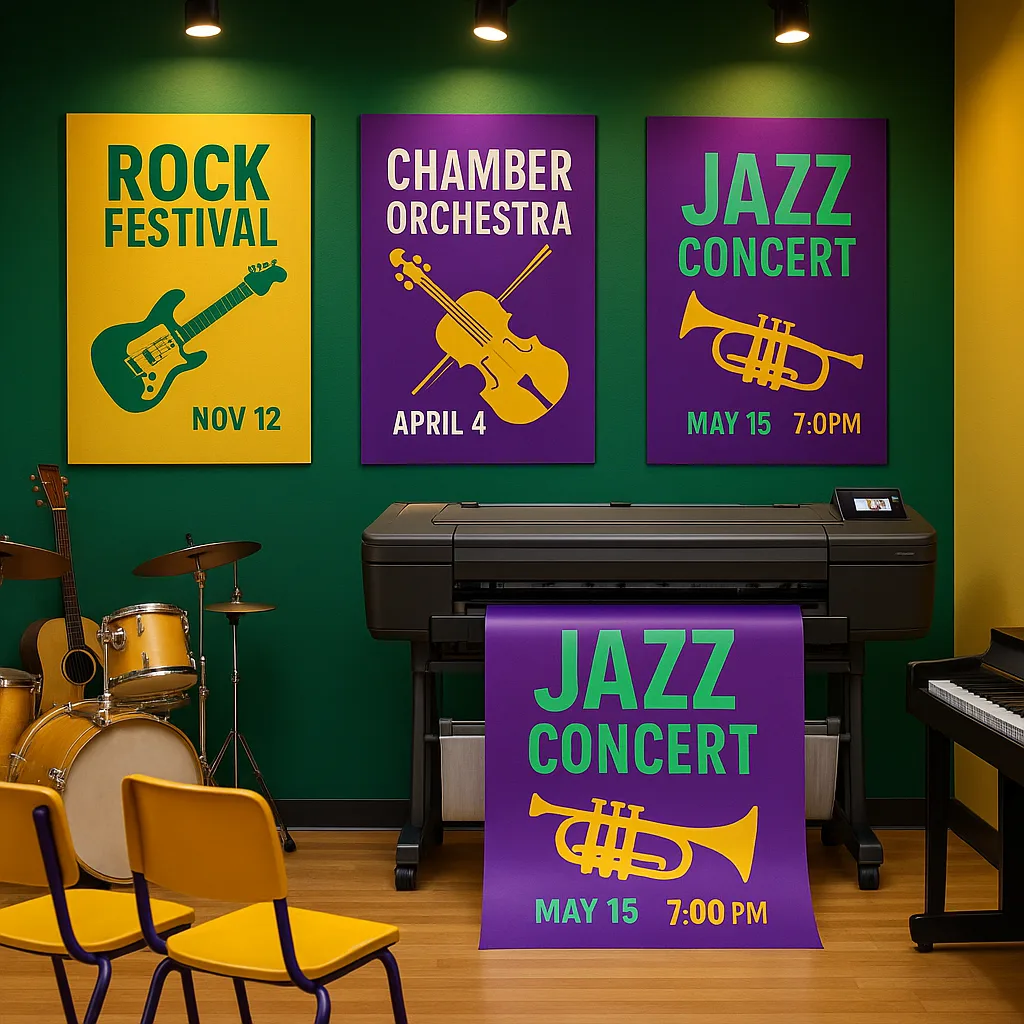
Picture this: Sarah rushes into my classroom, backpack overflowing with crumpled papers, searching frantically for yesterday’s math homework. Sound familiar? After fifteen years working with K-3 learners, I’ve discovered that traditional organization methods often fail our ADHD students. That’s why I’ve developed systematic visual organization centers using our poster maker machine ADHD organization tools that transform chaos into calm, focused learning.
Why Visual Organization Matters for ADHD Learners
Research from the CDC shows that 9.8% of children have ADHD diagnoses, with many more exhibiting executive function challenges. These students process information differently, often struggling with traditional text-heavy organizational systems. Visual supports tap into their strengths, providing immediate, clear cues that bypass working memory limitations.
Moreover, colorful visual systems engage the ADHD brain’s need for stimulation while creating predictable patterns. When we use bright, consistent visual anchors, we’re essentially creating external executive function supports. Therefore, investing in proper visual tools becomes crucial for inclusive classrooms.

Building Your Poster Maker Machine ADHD Organization Center
Let me share my step-by-step process for creating visual organization centers that actually work. First, consider your classroom layout and student needs. Next, gather your materials and plan your color-coding system. Finally, implement gradually to ensure student buy-in and success.
Essential Components of Visual Organization Systems
Creating effective visual supports requires thoughtful planning. Here’s what I include in every organization center:
Color-Coded Subject Areas: Each subject gets its own vibrant color – math is red, reading is blue, science is green. This system extends to folders, bins, and wall displays. Students quickly learn to associate colors with content areas, reducing decision fatigue.
Visual Schedule Boards: Using our Education Express 24″ Package A, I create large-format daily schedules with picture symbols and time blocks. These schedules use consistent icons that students recognize instantly.
Assignment Tracking Walls: Large poster boards divided into “To Do,” “Working On,” and “Completed” sections help students visualize their progress. Each assignment gets a color-coded card that students physically move through the stages.
Implementation Timeline
Week 1: Introduce color-coding system with subject folders and bins. Students practice sorting materials by color during transition times.
Week 2: Add visual schedules, reviewing them each morning and after lunch. Students take turns being “schedule keeper” to build ownership.
Week 3: Launch assignment tracking walls with modeling and guided practice. Celebrate small wins as students master the system.
Week 4: Integrate all components and adjust based on student feedback. Fine-tune systems for individual needs.
of ADHD students show improved task completion with visual supports
Designing Executive Function Support Walls
Executive function support walls serve as external brains for our ADHD learners. These comprehensive displays combine multiple organizational tools in one central location. Furthermore, they provide consistent visual anchors that students can reference throughout the day.
Time Management Section:
Create analog clock visuals showing key transition times. Include visual timers for common activities – 5 minutes for cleanup, 20 minutes for independent work. Additionally, add “time check” reminders at student eye level.
Self-Regulation Corner:
Design emotion thermometers showing escalation levels with matching coping strategies. Include breathing exercise visuals and movement break options. Students learn to self-monitor and choose appropriate supports independently.
Goal Tracking Display:
Set up individual goal charts with visual progress markers. Use star stickers or color-in thermometers to show advancement. Weekly celebrations reinforce positive momentum and build intrinsic motivation.
Strategy Reference Cards:
Post step-by-step visual guides for common tasks like “How to Start Your Work” or “What to Do When Stuck.” These cards use minimal text with clear illustrations, perfect for quick reference during work time.
Cost-Effective Implementation Strategies
Many teachers worry about the poster printer price when considering visual supports. However, the long-term benefits far outweigh initial investments. Our cost per print averages just $1.30-$1.50, making durable classroom visuals surprisingly affordable.
Consider this: One set of organization posters serves multiple students across several years. Compare that to purchasing pre-made materials that don’t match your specific needs. Plus, with our lifetime design service, you get custom visuals created specifically for your classroom dynamics.
Maximizing Your Investment
Budget Planning
Track poster usage and plan bulk printing sessionsSmart Strategies
Pool resources with grade-level teams. Share design files and printing costs. One poster maker machine serves multiple classrooms efficiently.Durability Tips
Protect your investment with proper careLong-Lasting Visuals
Laminate high-traffic posters. Use our coated paper for water-resistant displays. Store seasonal materials flat.Design Library
Create reusable templatesResource Building
Build a digital library of successful designs. Update yearly with minor tweaks. Share templates with new teachers joining your team.Success Story: Marcus’s Transformation
Marcus arrived in September unable to complete a single assignment independently. His desk overflowed with papers, and transitions triggered meltdowns. After implementing our visual organization system, he now manages his daily tasks with minimal support. His mother tears up describing how he proudly shows her his “completed” cards each afternoon. This transformation happened because we provided external structure matching his internal needs.
Troubleshooting Common Challenges
Even well-designed systems encounter obstacles. Here’s how I address frequent issues:
Student Resistance: Some students initially reject visual supports as “babyish.” I involve them in design choices, letting them select colors or icons. Ownership transforms resistance into enthusiasm.
Consistency Struggles: Maintaining systems requires dedication. Set phone reminders for system updates. Designate student helpers as “organization captains” who remind classmates about procedures.
Space Limitations: Small classrooms need creative solutions. Use vertical space with ceiling-hung displays. Create portable organization stations on rolling carts. Consider hallway displays for overflow.
Parent Partnership Extensions
Visual organization shouldn’t stop at school doors. I create take-home versions of our classroom systems using QR codes linking to printable resources. Parents appreciate having matching tools for homework time. Additionally, I host “Organization Nights” where families learn implementation strategies together.
Our Education Studio 36″ Package allows me to print parent-sized versions of our classroom visuals. Families can purchase laminated sets at cost, ensuring consistency between home and school environments.
Quick Reference: ADHD-Friendly Design Principles
HIGH CONTRAST
Use bold color differences between text and background. Avoid subtle shades that blur together.
CLEAR SPACING
Leave ample white space between elements. Crowded visuals overwhelm ADHD brains quickly.
CONSISTENT ICONS
Use same symbols throughout all materials. Repetition builds automatic recognition patterns.
MINIMAL TEXT
Prioritize visuals over words. Short, action-oriented phrases work better than paragraphs.
Your Next Steps
Creating effective visual organization centers doesn’t happen overnight. Start small with one system that addresses your most pressing need. Test it for two weeks, gather student feedback, then expand gradually. Remember, the goal isn’t perfection—it’s progress.
Ready to transform your classroom into an ADHD-friendly learning environment? Our team stands ready to help you select the perfect poster maker machine for your visual organization needs. Together, we’ll create spaces where every student can thrive, regardless of their executive function challenges.







